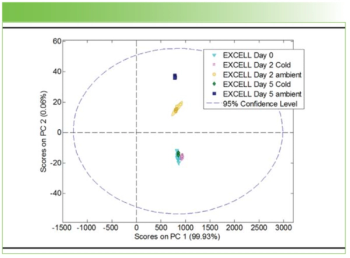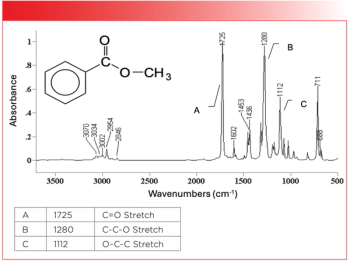
Breakthrough Algorithm Enables Rapid Peak Fitting and Resolution Enhancement for Raman Hyperspectra Analysis
A team of researchers has developed a novel algorithm for rapid peak fitting and resolution enhancement in Raman hyperspectra analysis. The algorithm offers significant advancements in processing large datasets, improving peak resolution, and extracting valuable information about analytes.
A team of researchers from The University of British Columbia in Vancouver, Canada, and the National Hellenic Research Foundation in Athens, Greece, has developed a novel algorithm for rapid peak fitting and resolution enhancement in the analysis of Raman hyperspectra. The algorithm, described in a study published in the journal Applied Spectroscopy, offers significant improvements in processing large hyperspectral data sets and extracting valuable information about analytes (1).
Spectroscopic peak parameters play a crucial role in understanding the characteristics of analytes. Peak fitting, which involves identifying and resolving overlapped peaks, is a complex task due to computational challenges and the often unknown nature of the analyte. This poses obstacles when processing vast hyperspectral datasets, especially for applications like manufacturing process control.
The research team developed a new two-part algorithm to address these challenges. In the first part, they utilized a combination of techniques to estimate the total number of bands and their parameters based on a representative spectrum from the dataset. Leveraging vector operations and exploiting intrinsic features of the Gaussian distribution, the algorithm rapidly fitted all the spectra in an iterative manner, ultimately producing the best fits for each spectrum.
By reducing the bandwidths and simultaneously increasing the amplitudes of the obtained bands, the algorithm constructed high-resolution spectra that significantly enhanced correlation-based analyses. To validate its effectiveness, the algorithm was tested on synthetic spectra, successfully recovering the ground truth correlations between highly overlapped peaks. Furthermore, the researchers applied the algorithm to low-resolution spectra of glucose, comparing the results to those obtained from high-resolution spectra. The algorithm showcased its ability to enhance peak resolution and capture important aspects of the data's intrinsic correlation structure.
To demonstrate its practical utility, the team processed a larger spectral dataset obtained from mammalian cells, both fixed with methanol and air drying. The algorithm successfully enhanced resolution in complex spectra and showcased its impact on two-dimensional correlation spectroscopy and principal component analyses.
The development of this new algorithm is a significant step forward in the field of Raman spectroscopy. Its ability to rapidly perform peak fitting and resolution enhancement on large hyperspectral datasets opens doors for improved analysis in various domains, including manufacturing, biotechnology, and materials science. Researchers and analysts can now obtain high-resolution spectra more efficiently, enabling deeper insights into the nature of analytes and their correlation structures.
As technology continues to advance, algorithms like these are essential tools that accelerate scientific progress and drive innovation in a wide range of industries.
Reference
(1) Schulze, H. G.; Rangan, S.; Vardaki, M. Z.; Blades, M. W.; Turner, R. F. B.; Piret, J. M. Rapid Vector-Based Peak Fitting and Resolution Enhancement for Correlation Analyses of Raman Hyperspectra. Appl. Spectrosc. 2023, ASAP. DOI:
Newsletter
Get essential updates on the latest spectroscopy technologies, regulatory standards, and best practices—subscribe today to Spectroscopy.




